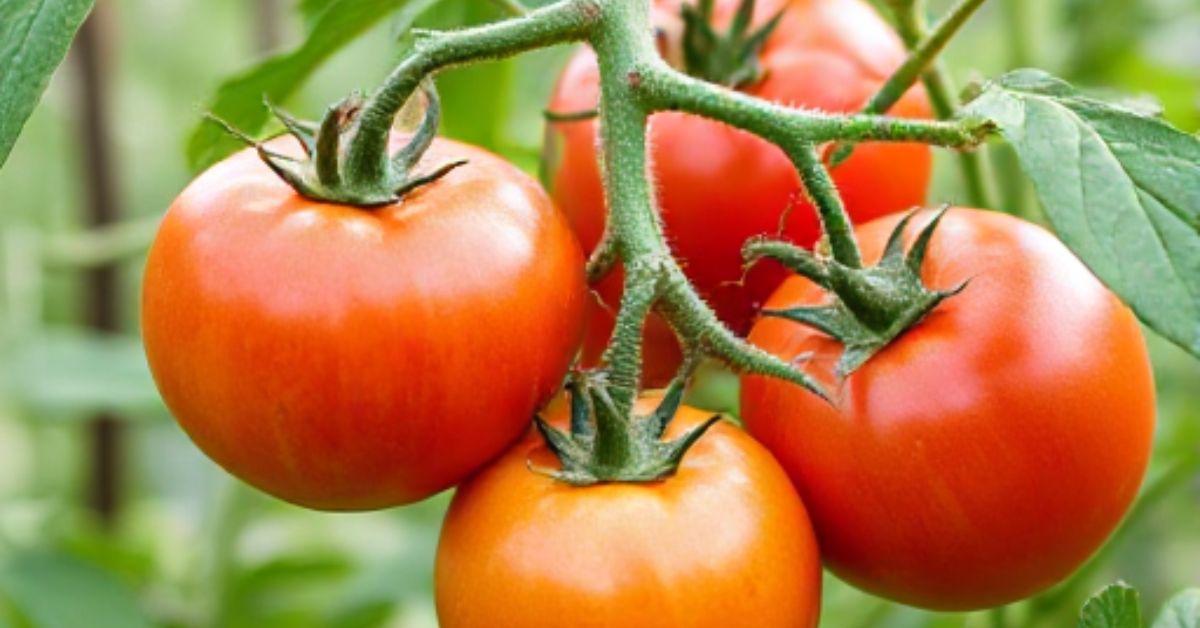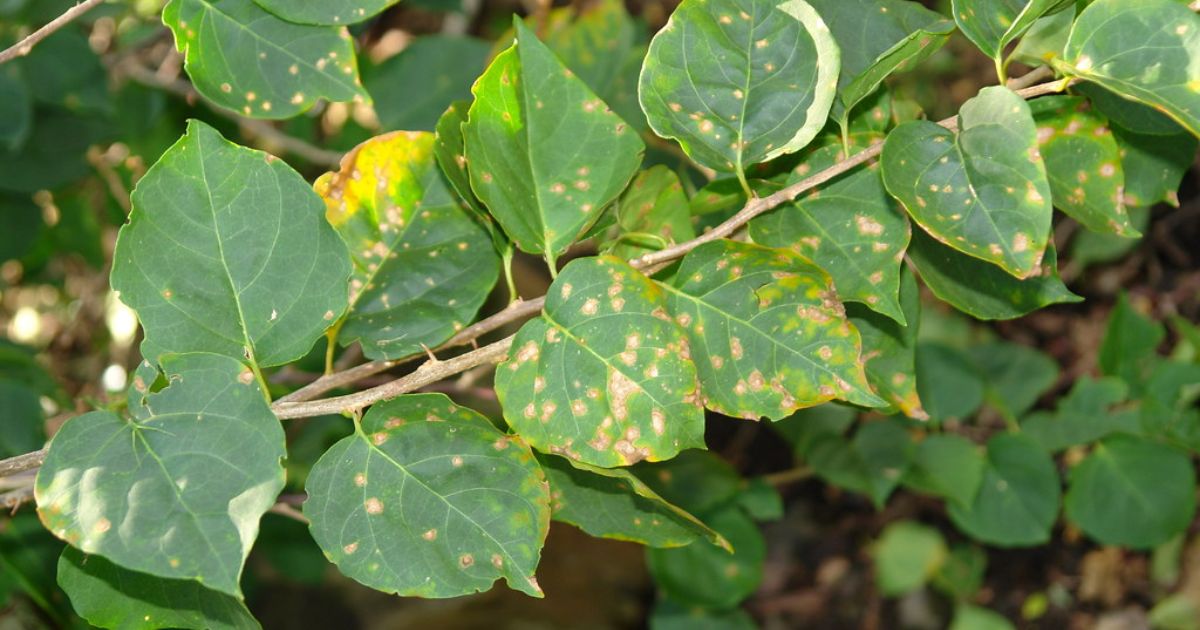One of the most fruitful crops to cultivate is tomatoes. , whether you’re a seasoned gardener or just starting your gardening journey. There’s nothing quite like biting into a juicy, homegrown tomato bursting with flavor! But achieving that ultimate bumper crop of tomatoes doesn’t happen by chance—it requires careful attention to their nutritional needs.Tomato plants are heavy feeders, demanding a rich supply of nutrients to thrive. From producing lush green foliage to setting plump, ripe fruit, every stage of a tomato plant’s life depends on the right balance of essential nutrients. Without proper fertilization, you risk dealing with issues like stunted growth, fewer fruits, or poor taste.
This guide will dive into everything you need about fertilizing tomatoes. From understanding their nutritional requirements to choosing the best organic or inorganic fertilizers and even exploring DIY options, we’ve got you covered. Whether growing your tomatoes in the garden, in containers, or a greenhouse, best fertilizer for tomato plants this article will help you unlock the secrets to maximizing your yield and ensuring the healthiest plants possible. Ready to grow tomatoes that make your neighbors jealous?
Understanding Tomato Nutritional Requirements
Understanding best tomato fertilizer nutritional needs is key to growing vigorous, healthy tomato plants that produce abundant, flavorful fruit. Tomatoes are heavy feeders, Growing Asparagus in Raised Beds requiring a precise balance of macronutrients, secondary nutrients, and micronutrients throughout their life cycle. Let’s break it down.
Macronutrients: The Big Three (NPK)
Nitrogen (N), phosphorus (P), and potassium (K) are the most critical nutrients for tomatoes.
- Nitrogen drives leafy green growth, helping the plant develop strong stems and lush foliage during its early stages. However, too much nitrogen can result in excessive leaves and fewer fruits.
- Fruit set, floral production, and root development all depend on phosphorus. Without it, plants could find it difficult to bloom or bear fruit.
- Fruit quality is significantly influenced by potassium, improving size, color, and flavor while boosting disease resistance.
Secondary Nutrients: The Unsung Heroes
Tomatoes also need calcium, magnesium, and sulfur for optimal health.
- Calcium prevents blossom-end rot and strengthens cell walls.
- Magnesium is vital for photosynthesis and ensuring healthy green leaves.
- Sulfur supports enzyme function and overall plant metabolism.
Micronutrients: Small but Mighty
Micronutrients like iron, zinc, manganese, and boron are needed in trace amounts but are equally important. These elements aid chlorophyll production, nutrient absorption, and overall plant vigor.
Why Balance Matters
Tomatoes are sensitive to nutrient imbalances. A deficiency in any key nutrient can lead to issues like yellowing leaves, poor fruit development, or weak stems. Conversely, over-fertilizing can result in burned roots or overly leafy plants with minimal fruit production.By understanding these requirements, How to Prevent Tomato Catfacing: you can give your tomatoes the perfect nutritional foundation for a bumper crop!shrimp shells in compost
The Rooting Stage: Supporting Healthy Root Development
Between 15 and 25 days after planting, tomato plants enter the rooting stage, requiring precise fertilization to ensure strong root formation. During this phase, 13:40:13 NPK fertilizer, which can be administered via fertigation or drenching, is applied.
Farmer Ravi Shankar recommends:
“I use 13:40:13 NPK during the rooting phase, and it has aided in the development of a robust root system in my plants. Fertigation ensures uniform fertilizer distribution.”
NPK Dosage for the Rooting Stage:
- First Dose: 13:40:13 NPK (2 kg/acre for fertigation or 5-10 gm/liter of water for drenching)
- Second Dose: 2 kg/acre of 12:61:00 with 2 liters of humic and fulvic acid
- Third Dose: 13:40:13 NPK (2 kg/acre)
The Vegetative Stage: Promoting Lush Green Growth
Between 25 and 40 days after transplanting, tomato fertilizer plants focus on canopy formation. Use 19:19:19 NPK fertilizer to enhance leaf development. A 20:20:20 NPK and magnesium sulfate mix can also improve chlorophyll production and address nutrient deficiencies.
Farmer Gopal Yadav shares:
“Using 19:19:19 NPK and magnesium sulfate during the vegetative stage has resulted in lush green leaves.”
NPK Dosage for the Vegetative Stage:
- First Dose: 19:19:19 NPK (2.5 kg/acre)
- Second Dose: 20:20:20 NPK (2.5 kg/acre) + magnesium sulphate (1 kg/acre)
- Third Dose: 19:19:19 NPK (2.5 kg/acre)
The Flowering Stage: Ensuring Healthy Pollen Formation
During 40-50 days after planting, apply 16:08:24 NPK fertilizer to supply nutrients vital for flower development. Additionally, Allbor (boron foliar spray) can promote pollen health and prevent zinc deficiencies with a mix of 00:52:34 NPK and zinc sulfate.
Farmer Mahesh Linganna notes:
“Applying 16:08:24 NPK and Allbor during flowering increased flower count and is a banana a herb fruit set.”
NPK Dosage for the Flowering Stage:
- First Dose: 16:08:24 NPK (3.5 kg/acre) + Allbor (1 gm/liter of water, foliar spray)
- Second Dose: 00:52:34 NPK (3.5 kg/acre) + zinc sulphate (500 gm/acre)
- Third Dose: 16:08:24 NPK (3.5 kg/acre)
The Fruiting Stage: Growing Juicy, Healthy Tomatoes
Between 50 and 65 days after transplanting, best fertilizer for tomatoes shift to fruit production. Apply 13:00:45 NPK fertilizer and Multiplex Kranti foliar spray to address calcium deficiencies and prevent blossom-end rot. Potassium-rich NPK fertilizers contribute to fruit size, color, and taste.
Farmer Jaya Raja says:
“Using 13:00:45 NPK and Multiplex Kranti produced healthy and flavorful tomatoes.”
NPK Dosage for the Fruiting Stage:
- First Dose: 13:00:45 NPK (4-5 kg/acre) + Multiplex Kranti (1.5 ml/liter of water, foliar spray)
- Second Dose: Calcium nitrate (4-5 kg/acre) + Fe EDDHA (500 gm/acre)
- Third Dose: 13:00:45 NPK (4-5 kg/acre)
The Harvesting Stage: Enhancing Color and Flavor
Tomatoes are ready for harvest 65-80 days after transplanting. Mix 00:00:50 NPK and 18% sulfur to intensify red color and flavor. This blend can be applied via foliar spray or drenching.
Farmer Puttappa highlights:
“00:00:50 NPK with sulfur improved the red color and flavor, making the tomatoes market-ready.”
NPK Dosage for the Harvesting Stage:
- First Dose: 00:00:50 NPK + 18% sulphur (4-5 kg/acre)
- Second Dose: 00:52:34 NPK (4-5 kg/acre) + Fe EDDHA (500 gm/acre)
- Third Dose: 00:00:50 NPK + 18% sulphur (4-5 kg/acre)
Fertilization After the First Harvest

After the initial harvest, apply 00:52:34 NPK to encourage new shoots and fruit development. Transition to 13:00:45 NPK and 00:00:50 NPK during subsequent fruiting stages for enhanced fruit quality. Repeat the process for up to four pickings.
For sustained plant vigor:
- To encourage shoot growth, use 13:40:13 NPK after the third or fourth plucking.
- Switch to 20:20:20 NPK to initiate fruiting and continue until the final harvest.
Types of Fertilizers for Tomatoes
Choosing the best food for growing tomatoes is crucial to meet your tomato plants’ nutritional needs. Whether you prefer organic, inorganic, or DIY options, each type has unique benefits. Here’s an overview to help you decide what works best for your garden.
Organic Fertilizers
- Natural ingredients are used to make organic fertilizers, which gradually enhance soil health.
- Rich in organic matter, compost enhances soil structure and what fruit can boost wetness? provides a slow release of nutrients.
- Well-rotted cow, horse, or chicken manure isa great supplier of nitrogen and other vital elements.
- Bone Meal and Blood Meal: Phosphorus is abundant in bone meal. while blood is an excellent nitrogen source. Both are perfect for supporting growth and fruit production.
Inorganic Fertilizers
Inorganic (synthetic) fertilizers provide concentrated, readily available nutrients.
- Granular Fertilizers: These slow-release options supply nutrients over time, making them great for steady growth. Look for balanced NPK ratios like 10-10-10 or 5-10-10, depending on your plant’s stage.
- Liquid Fertilizers: Ideal for quick absorption, liquid fertilizers can be applied during watering to boost growth, especially during flowering and fruiting stages.
Homemade Fertilizers
DIY fertilizers are cost-effective and eco-friendly.
- Compost Tea: A nutrient-rich liquid made by steeping compost in water.
- Eggshells and Coffee Grounds: Crushed eggshells provide calcium, while coffee grounds add nitrogen.
- Epsom Salt: A great source of magnesium, essential for healthy leaves and fruit development.
Which Should You Choose?
The best food for tomato plants r depends on soil, plant stage, and gardening preferences. Organic options improve long-term soil health, while inorganic fertilizers deliver faster results. Combining both or adding DIY methods can create a balanced approach for thriving tomatoes!
How to Choose the Best Fertilizer for Your Tomatoes
Selecting the right fertilizer for your tomatoes involves understanding their needs and matching them with the right nutrient balance. The process starts with assessing your soil and tailoring the fertilizer to your plant’s growth stage.
Test Your Soil First
Do a soil test to find out the pH and nutritional content of the soil before adding any fertilizer. By doing this, you can spot shortages and prevent overfertilization. Soils with a pH of 6.0 to 6.8 are ideal for tomatoes because they are somewhat acidic.
Consider the Growth Stage
best tomato food require different nutrients at various stages of growth.
- During the early stages, focus on nitrogen to promote leafy growth and strong stems.
- As the plant transitions to flowering and fruiting, reduce nitrogen and increase phosphorus and potassium for better blooms and fruit production.
Organic vs. Inorganic Fertilizers
Decide whether you prefer organic fertilizers, which improve soil health over time, or inorganic options that provide immediate nutrient availability. Organic choices, like compost or bone meal, are excellent for long-term benefits, while synthetic fertilizers, such as liquid blends, deliver quick results.
Balance Is Key
Look for fertilizers with an NPK ratio suited to your plant’s needs, such as 5-10-10 for flowering or 10-5-5 for early growth. The right fertilizer will help your tomatoes thrive and produce an abundant harvest!
Which Tomato Varieties Benefit from Fish Head Fertilizer?

Fish head fertilizer is a natural and nutrient-rich option that can benefit virtually any variety of tomatoes. It is packed with nitrogen, phosphorus, calcium, and trace minerals and promotes robust growth, strong roots, and high-quality fruit production. Here’s how specific tomato varieties can benefit:
1. Heirloom Tomatoes
Heirloom varieties, like Brandywine and Cherokee Purple, thrive with the slow-release nutrients provided by fish heads. These tomatoes require consistent feeding to support their large, 9 Fruits and Vegetables flavorful fruits, and the phosphorus in fish heads aids in healthy root systems and abundant fruit sets.
2. Cherry and Grape Tomatoes
Smaller varieties, such as Sweet 100 or Sun Gold, benefit significantly from the nitrogen and calcium in fish heads. These nutrients encourage vigorous vine growth and help prevent common issues like blossom-end rot, ensuring small but consistent fruit production throughout the season.
3. Roma and Paste Tomatoes
Varieties like San Marzano and Roma require balanced nutrition for their dense, meaty fruits. Fish heads supply calcium and phosphorus, enhancing fruit quality and reducing cracking or poor texture.
4. Indeterminate Tomatoes
Indeterminate tomatoes grow and produce fruit all season long and need continuous nutrient support. The slow decomposition of fish heads ensures a steady supply of essential elements to sustain these plants.
Fish head good tomato fertilizer is a versatile and powerful natural option for all tomato types!
Conclusion
Fertilizing your tomatoes is the key to achieving a lush, productive garden filled with vibrant, flavorful fruits. Understanding your plants’ nutritional needs and providing the right balance of nutrients at every growth stage ensures a healthy and abundant harvest. Whether you prefer organic fertilizers like compost and fish heads, fast-acting synthetic options, or DIY solutions like eggshells and Epsom salt, a method suits every gardener and tomato variety.
Remember, success starts with the soil—test it regularly to ensure it meets your plants’ requirements. Tailor your fertilization approach to match the best feed for tomato plants stage of your tomatoes, and don’t overlook the importance of secondary nutrients like calcium and magnesium, which are essential for preventing common problems like blossom-end rot. By maintaining a balanced feeding schedule and avoiding over-fertilization, you can enjoy thriving tomato plants that reward you with the ultimate bumper crop.With a bit of care and the right fertilizer, your garden will be bursting with tomatoes that are not only healthy but also incredibly flavorful. So, get your hands dirty, experiment with different options, and watch your tomato plants flourish! Happy gardening!
FAQ
How often should I fertilize my tomatoes?
Fertilize every 2-4 weeks, depending on the plant’s growth stage and the type of fertilizer used.
What is the best fertilizer ratio for tomatoes?
Use 10-5-5 for early growth. During flowering and fruiting, switch to 5-10-10 or a similar high-phosphorus fertilizer.
Can I use fish heads for container-grown tomatoes?
Yes, bury fish heads deeply in the container soil to avoid odor and ensure proper drainage to prevent overwatering.
How do I prevent blossom-end rot in tomatoes?
Ensure consistent watering and provide calcium-rich fertilizers like bone meal or gypsum to prevent this common issue.
Can I over-fertilize my tomatoes?
Over-fertilizing can cause excessive foliage, poor fruit production, and even plant damage. Always follow recommended application rates.
What’s the best DIY fertilizer for tomatoes?
Compost tea, crushed eggshells, and Epsom salt are excellent DIY options that provide nitrogen, calcium, and magnesium for healthy growth.





